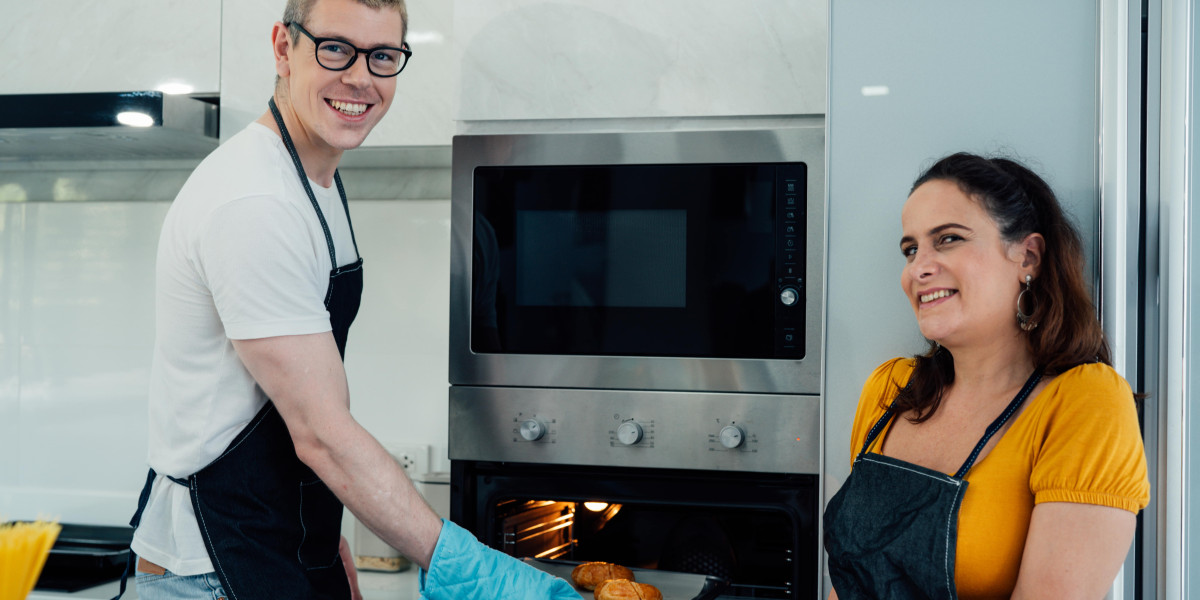
The Comprehensive Guide to Built-In Cookers and Hobs
Built-in cookers and hobs have become significantly popular in modern kitchen areas, offering both performance and visual appeal. These integrated appliances, created to fit flawlessly into kitchen cabinets, maximize space while boosting the cooking experience. This post will check out the various kinds of built-in cookers and hobs, their advantages, upkeep tips, and regularly asked concerns.
Comprehending Built-In Cookers and Hobs
Built-in cookers normally include ovens, while hobs refer to the cooking surface area that can incorporate numerous heating aspects such as gas burners, electric coils, or induction zones. When integrated, these two appliances develop an efficient and streamlined cooking setup.
Types of Built-In Cookers and Hobs
When choosing a built-in inbuilt cooker and hob, https://www.ovensandhobs.uk,, it's necessary to understand the numerous types readily available. Here's an in-depth table comparing the primary types:
| Type | Description | Pros | Cons |
|---|---|---|---|
| Gas Hob | Utilizes gas as a fuel source. | Quick heat change, cooking control. | Requires gas line installation. |
| Cookology 72L Electric Oven & Microwave Combo Hob | Utilizes electric coils or strong plate heating. | Normally cheaper, easy to tidy. | Slower to heat and cool off. |
| Induction Hob | Utilizes electro-magnetic energy for cooking. | Quick heating, energy-efficient, safe. | Expensive, needs compatible pots and pans. |
| Built-In Oven | Can be electric, gas, or combination. | Flexible cooking options, different sizes. | Repaired place, possible installation complexity. |
Advantages of Built-In Cookers and Hobs
Space-Saving Design: Built-in systems conserve space by integrating perfectly into the kitchen design, leaving more room for storage and countertops.
Aesthetic Appeal: They supply a sleek and modern look, elevating the design of any kitchen.
Customization: With various styles and setups, house owners can select appliances that best integrated ovens fit their cooking habits and kitchen dimensions.
Improved Functionality: Built-in cookers often come with sophisticated functions such as self-cleaning options, numerous cooking modes, and programmable timers.
Security Features: Modern hobs integrate features like automated shut-off and child locks, improving security in the kitchen.
Maintenance Tips for Built-In Cookers and Hobs
To ensure the durability and ideal performance of built-in cookers and hobs, proper maintenance is essential. Below are essential upkeep pointers:
Regular Cleaning: Wipe spills and spots instantly to avoid them from hardening or ending up being more difficult to clean up.
Use Appropriate Cleaning Supplies: Avoid abrasive materials that can scratch surfaces. Usage cleaner particularly developed for the type of appliance you have.
Inspect Gas and Electrical Connections: Regular assessments can prevent leaks and guarantee optimum performance.
Adjust Temperature Settings: If you notice disparities in cooking temperatures, think about recalibrating the oven.
Schedule Professional Servicing: Annual check-ups can help recognize and correct small concerns before they intensify.
Selecting the Right Built-In Cooker and Hob
When picking a built-in cooker and hob, a number of factors should be thought about:
1. Cooking Preferences:
- If you delight in quick temperature adjustments, a gas hob might be perfect.
- For energy effectiveness and uniform cooking, induction hobs are chosen.
2. Kitchen Size:
- Consider the area offered for setup. Procedure cabinets and other appliances to make sure the selected system fits conveniently.
3. Style and Design:
- Opt for styles that complement your kitchen's decoration. Built-in units can be found in different finishes, such as stainless-steel, black, or custom-made cabinetry.
4. Spending plan:
- Establish a budget that aspects in purchase costs, installation charges, and long-term operating costs.
5. Brand name Reputation:
- Research respectable brands understood for dependability and client service. Reading evaluations and seeking suggestions can also be valuable.
Regularly Asked Questions (FAQs)
Q1: Are built-in cookers and hobs more costly than standard units?A1: Generally, built-in cookers and hobs can be more expensive upfront due to installation and style. Nevertheless, they may use long-lasting cost savings through energy performance.
Q2: Can I install a built-in cooker or hob myself?A2: While some might be set up by property owners, it is typically recommended to employ an expert, especially for gas or complex electrical connections, to ensure security and compliance with regional codes.
Q3: What is the average lifespan of built-in cookers and hobs?A3: With appropriate care, built-in cookers and hobs can last anywhere from 10 to 15 years. Regular upkeep can extend their life.
Q4: Is it possible to integrate different types of hobs with the same oven?A4: Yes, lots of cooking areas feature a combination of hobs (e.g., gas and induction) along with a built-in oven, permitting for flexible cooking options.

Q5: How do I know if my hob is energy-efficient?A5: Look for energy efficiency scores and think about induction hobs, which normally use superior energy efficiency compared to gas or conventional electric hobs.
Built-in cookers and hobs provide a mix of modern-day style and advanced cooking innovation, enhancing any kitchen's performance and style. By understanding the various types available, their advantages, and upkeep needs, property owners can make educated decisions when investing in these vital kitchen appliances. With proper choice and care, built-in cookers and hobs can offer years of pleasurable cooking and a smooth kitchen experience.


